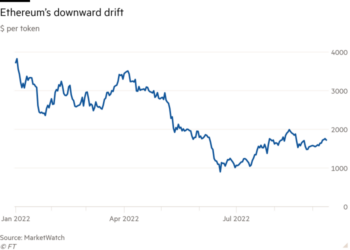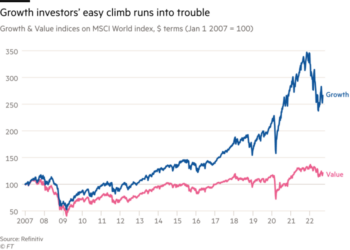The world of video gaming is at its heart about fantasy and escapism, which is perhaps how we should approach Barclays’ latest note on esports.
Barclays’ equity analysts have blessed us with a 31-and-a-bit page note on virtual spectator monetisation. For anyone majorly out of the loop, here’s the 101:
Picture an arena full of sport fans, but instead, replace the basketball court and tall athletic players with rows of back-to-back PCs and young, focused pro-gamers staring iento the screen.
Esports, which can trace its origins back to ’80s arcade addicts and ’90s LAN parties, has become a video game-adjacent sector in its own right. Barclays points to some impressive sounding viewer numbers, including a peak audience of nearly 74mn for 2021’s League of Legends world championships.
Its analysts see a boom times ahead:
An influx of deals, partnerships and sponsors have flooded the industry with capital, and we see this increasing as more companies decide to dabble in the growing space.
They then make some predictions that are . . . undoubtedly ambitious. Barclays projects that the esports ‘ecosystem’ could be worth $9.6bn by 2030, versus a total addressable market of $1.38bn today — though with a projected range of $5.8bn to $13.5bn we’re clearly in Numberwang territory.
The central projection reflects a substantial expected pickup in the number of esports fans in the second half of the decade:
Predictions for revenue per fan are similarly vertiginous:
What would explain such a sizable jump? Barclays identifies several legitimate factors, including increased media rights prices, consolidation and the entry of “non-endemic” sponsors. (Historically, esports sponsorship has been the domain of closely-linked companies such as hardware purveyors, computer makers and, yes, energy drinks.)
Then it hits some difficult ground. Can you imagine why? Write your guess on a piece of paper and then scroll down to find the correct answer.
…
…
…
…
…
…
…
Crypto. It’s crypto.
Crypto. And gambling.
🙃
Barclays:
Whilst both cryptocurrencies and esports disrupted very different industries, they both are made of the same DNA: a young tech-savvy demographic who will likely steer the future path of organisations that exist today. With the integration of blockchain technology into the world of esports, both industries are about to converge and we think fuel each others’ growth. There are various ways that we see blockchain propelling the growth of esports.
Its analysts describe crypto as “the cousin of esports”. Now, this is not necessarily a bad thing: after all, sleep is the cousin of death, and sleep is generally considered to be great!
Crypto, on the other hand, is somewhat more controversial. This is less Family Fortunes and more Les Cousins Dangereux.
The problems are pretty familiar: Barclays is good on the potential what and where of crypto/blockchain integration, but the how and why are a little more elusive.
Take non-fungible tokens:
The infrastructure for a marketplace to trade anything in the ‘virtual’ world now exists, meaning popular leagues and brands can capitalise on this digital transformation to capture a new B2C revenue stream. For example, an RPG (role-playing game) title such as World of Warcraft revolves around rare, legendary items which are collectable. There may only be 50 items that are collectable, and each may have a distinctive characteristic. This may be owned by the game’s most elite player and the value of it can be significant as the collectable contains the history of how it has been used in several different games by the player.
“Hang on,” you might say, having just laid down your sword in Azeroth and opened up FT dot com. “Why do I need an NFT to do that?”
You’re right to be perplexed, adventurer. After all, scarcity is already completely possible within World of Warcraft, itself one of the most established metaverses.
Indeed, it already exists. One need only look at items such as the highly sought-after “Big Love Rocket” or “Chromatic Sword”. And many games already included branded content.
Barclays suggests blockchain technology could mean such items can be “permanently stored on the metaverse and cannot be stolen or forged and can be put into a cryptocurrency wallet to be sold if the owner ever chooses to”.
Putting aside a snark about the security of crypto wallets, issues such as forgery aren’t really an issue in a closed system such as WoW – which is operated by a single company that has total control over supply and demand within its game universe.
Betting, meanwhile, is the “subsegment in the peripheral of the ecosystem” developing around esports that has taken the longest to take off, Barclays poetically bemoans. If only more people fancied a flutter . . .
We think the biggest hindrances to the esports betting industry is the fear of payment methods, security of the market and lack of regulatory oversight.
But not to worry!
Each of these aspects are improved with the existence of blockchain technology which makes it nearly impossible for hackers to break into servers due to the decentralisation and very effective data encryption measures.
Quite how blockchain technology will “unlock the potential from esports betting” is unclear. Barclays notes only that cryptocurrencies will allow fans to deposit bets and withdraw their winnings (because only losers ever lose) relatively quickly, “bypassing the need for banks and making esports more accessible”.
Without showing its working, the bank predicts direct revenues from betting on popular games like League of Legends or Dota 2 could hit $2.1bn by 2030.
Then comes one interesting if ever so slightly sinister tidbit. Apparently, pure-play esports betting company Rivalry estimates that because its customers are younger and have fewer financial commitments, they’re more likely to keep betting as inflation rises and the macro outlook darkens.
Because of that, Barclays believes esports betting has “a natural advantage to traditional sports betting where bettors tend to be slightly older.”
The bank glosses over whether or not it’s a good idea to rope ever younger audiences into gambling on their favourite games, focusing instead on how snazzy in-game bets might boost traffic:
The technology of esports runs on machines and produce vast amounts of data which provide bookmakers with opportunities to update in-play odds by the millisecond as events unfold and more accurate pre-game pricing can occur. This will differentiate the successful esports book makers from the weaker operators, as cutting edge tech will play a major part. Given the nature of the digital games, a wider array of in-game bets can also be offered making this a much more engaging (for example no. of head shots, no. of kills, time spent on a certain level, etc.).
And yet paper after paper has drawn attention to the obvious risks posed to young gamers, including those who bet using in-game assets.
“Skin gambling on esports and games of chance are easily accessible to underage persons,” researchers in Australia write. “Early evidence has shown that esports bettors may be at risk for greater gambling involvement (i.e., extending to traditional forms of gambling), greater gambling intensity, and the development of gambling problems”.
Time to get real?















